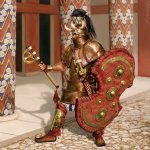Visst, om man ignorerar de källor som faktiskt finns så kan man förstås hitta på vad man vill. I så fall är kanske Idun krigsguden.Kom ihåg att den här tydliga uppdelningen i olika karaktärer med etablerade roller i en och samma gudafamilj kan vara ett ganska sent påfund. Vi vet väldigt lite om germansk religion som helhet
You are using an out of date browser. It may not display this or other websites correctly.
You should upgrade or use an alternative browser.
You should upgrade or use an alternative browser.
Bronsåldersfantasy?
- Thread starter Ram
- Start date
Visst, om man ignorerar de källor som faktiskt finns så kan man förstås hitta på vad man vill. I så fall är kanske Idun krigsguden.
Fast nu handlar det inte om att ignorera de källor som finns. Utan att inse dess begränsningar. Vi har inga indikationer på Idun som krigsgud. Men vi har heller inga skäl att tro att människor i germanskt område under åren 300–600 tänkte sig förhållandet mellan Tyr, Oden och Tor som de skildras i Eddan några hundra år senare. Med den uppdelning av domäner mellan sig som de har i den skildringen.
Istället har vi skäl att tro att det sker ett religionsskifte i Norden under den här tiden. Att göra Oden, och kanske Tor, till centrum för kulten kan vara en nymodighet i området, med inspiration tagen från sydost. Som tränger undan äldre föreställningar.
Vad som faktiskt hände där och då är öppet för tolkning, utan att man för den sakens skull gör våld på några källor. Eftersom källorna inte riktigt finns.
JohanL
Champion
- Joined
- 23 Jan 2021
- Messages
- 10,095
Daniel Gorringe : Historically accurate Xena sketches (tumblr.com)
"Thracian-Peltast Xena. She's using a Sica, javelins, and pelte shield, and wears Thracian garb.
![[IMG] [IMG]](https://64.media.tumblr.com/bec2e4a7ea4e765e71561a492705ec0c/tumblr_otpvpvq8kL1tmed5eo1_1280.png)
In take two, Xena combines archaic-classical Greek , and Thracian equipment. She still has the lightweight wicker-and-goatskin pelte, but adds greaves and a slightly more Grecian Kopis sword.
![[IMG] [IMG]](https://64.media.tumblr.com/e5e6b3a340f59ff50c1b168a49e16bbb/tumblr_otpvpvq8kL1tmed5eo2_1280.png)
In this take, Xena is equipped as a Greek Hoplite from the murky boundary of the Archaic and Classical periods.
![[IMG] [IMG]](https://64.media.tumblr.com/fd8fae7e35ff266faa546eaf274b414c/tumblr_otpvpvq8kL1tmed5eo3_1280.png)
Alternatively, Xena can use a Linothorax- a layered linen armour with bronze inserts and alot of style.
![[IMG] [IMG]](https://64.media.tumblr.com/bdce346c1cb3e14a1b4058d6cd009e65/tumblr_otpvpvq8kL1tmed5eo4_1280.png)
In this version, Xena hails from the 12th c BC, and uses Mycenaean arms and armour. It has a certain Barbarian je n'ais se quoi.
![[IMG] [IMG]](https://64.media.tumblr.com/dba40b2e10525d0ea02581bc7f4dcb46/tumblr_otpvpvq8kL1tmed5eo5_1280.png)
Gabrielle takes a level of badass with the Amazons; luckily for me, Scythian amazon get-up is extremely distinctive and fun to draw. A bow, lasso, and short Akinakes make her contrast well with Xena.
![[IMG] [IMG]](https://64.media.tumblr.com/e70a4ee2477c1fcd167f226cd90ae770/tumblr_otpvpvq8kL1tmed5eo6_1280.png)
---------------------------------------------------------------
Historically Accurate Xena Project, WIPs : Daniel Gorringe on Tumblr

"An attempt is made at a sizing scale. Here, Xena’s only on 8 heads, where Gabrielle is on a basic 7- a touch tall tall for an Ancient Greek farmgirl. In the background, some armour work. I’m not sure whether to commit to gorgon tiddies. Seems like a very strong statement, really.

Here, Xena sits at a “heroic” 9 heads high. I think this works better for her, but Gaby needs a bit of a boost (to quite tall for her time) not to look like a hobbit in comparison.

Let’s have an accurate Heracles, while we’re at it. My headcanon is that, mostly to frustrate pissing contests over who’d beat who, that they get along like a house on fire, and whenever they meet, drink and eat the town dry while telling grotesquely exaggerated accounts of their already mind-boggling adventures.

Lastly, it’s ballgown edition, or rather, classical Minoan/Mycenaean garb. The garments strongly look to have had a boned, supportive corset-like component, given the impressive amount of support that these girls seemed to have been getting on bared breasts in sculpture and frescoes. The dense layers of pleating, tassels, embroidery, and patterning of this era are incredibly fun to draw, and incredibly time consuming."
---------------------------------------------------------------
Daniel Gorringe : Historically Accurate Xena- now in full colour! (tumblr.com)

Hiccups and delays aside, here it is. Xena is equipped as an early hoplite; (my headcanon is that, owing to her immense, perhaps semi-divine strength, the bronze is between 4 and 8mm thick- too much for any muscle powered weapon to handle from any angle) packing an early Doru, a Boeotian shield, and a Makhaira sword.
Gabrielle’s Amazonian outfit is a composite of Scythian grave finds; she wields a composite bow and Akinakes sword, wears an elaborate phrygian cap, and the trousers and moccasins of a culture seriously weird to Greeks.
Other avenues are still waiting to be explored! Don’t forget to reblog, and tell me what you think.
I’m absolutely willing to defend my questionable use of snarling Gorgoneiona. Fight me.
---------------------------------------------------------------
The last entry in my “historically accurate Xena" series : Daniel Gorringe on Tumblr

"Thracian-Peltast Xena. She's using a Sica, javelins, and pelte shield, and wears Thracian garb.
![[IMG] [IMG]](https://64.media.tumblr.com/bec2e4a7ea4e765e71561a492705ec0c/tumblr_otpvpvq8kL1tmed5eo1_1280.png)
In take two, Xena combines archaic-classical Greek , and Thracian equipment. She still has the lightweight wicker-and-goatskin pelte, but adds greaves and a slightly more Grecian Kopis sword.
![[IMG] [IMG]](https://64.media.tumblr.com/e5e6b3a340f59ff50c1b168a49e16bbb/tumblr_otpvpvq8kL1tmed5eo2_1280.png)
In this take, Xena is equipped as a Greek Hoplite from the murky boundary of the Archaic and Classical periods.
![[IMG] [IMG]](https://64.media.tumblr.com/fd8fae7e35ff266faa546eaf274b414c/tumblr_otpvpvq8kL1tmed5eo3_1280.png)
Alternatively, Xena can use a Linothorax- a layered linen armour with bronze inserts and alot of style.
![[IMG] [IMG]](https://64.media.tumblr.com/bdce346c1cb3e14a1b4058d6cd009e65/tumblr_otpvpvq8kL1tmed5eo4_1280.png)
In this version, Xena hails from the 12th c BC, and uses Mycenaean arms and armour. It has a certain Barbarian je n'ais se quoi.
![[IMG] [IMG]](https://64.media.tumblr.com/dba40b2e10525d0ea02581bc7f4dcb46/tumblr_otpvpvq8kL1tmed5eo5_1280.png)
Gabrielle takes a level of badass with the Amazons; luckily for me, Scythian amazon get-up is extremely distinctive and fun to draw. A bow, lasso, and short Akinakes make her contrast well with Xena.
![[IMG] [IMG]](https://64.media.tumblr.com/e70a4ee2477c1fcd167f226cd90ae770/tumblr_otpvpvq8kL1tmed5eo6_1280.png)
---------------------------------------------------------------
Historically Accurate Xena Project, WIPs : Daniel Gorringe on Tumblr

"An attempt is made at a sizing scale. Here, Xena’s only on 8 heads, where Gabrielle is on a basic 7- a touch tall tall for an Ancient Greek farmgirl. In the background, some armour work. I’m not sure whether to commit to gorgon tiddies. Seems like a very strong statement, really.

Here, Xena sits at a “heroic” 9 heads high. I think this works better for her, but Gaby needs a bit of a boost (to quite tall for her time) not to look like a hobbit in comparison.

Let’s have an accurate Heracles, while we’re at it. My headcanon is that, mostly to frustrate pissing contests over who’d beat who, that they get along like a house on fire, and whenever they meet, drink and eat the town dry while telling grotesquely exaggerated accounts of their already mind-boggling adventures.

Lastly, it’s ballgown edition, or rather, classical Minoan/Mycenaean garb. The garments strongly look to have had a boned, supportive corset-like component, given the impressive amount of support that these girls seemed to have been getting on bared breasts in sculpture and frescoes. The dense layers of pleating, tassels, embroidery, and patterning of this era are incredibly fun to draw, and incredibly time consuming."
---------------------------------------------------------------
Daniel Gorringe : Historically Accurate Xena- now in full colour! (tumblr.com)
Hiccups and delays aside, here it is. Xena is equipped as an early hoplite; (my headcanon is that, owing to her immense, perhaps semi-divine strength, the bronze is between 4 and 8mm thick- too much for any muscle powered weapon to handle from any angle) packing an early Doru, a Boeotian shield, and a Makhaira sword.
Gabrielle’s Amazonian outfit is a composite of Scythian grave finds; she wields a composite bow and Akinakes sword, wears an elaborate phrygian cap, and the trousers and moccasins of a culture seriously weird to Greeks.
Other avenues are still waiting to be explored! Don’t forget to reblog, and tell me what you think.
I’m absolutely willing to defend my questionable use of snarling Gorgoneiona. Fight me.
---------------------------------------------------------------
The last entry in my “historically accurate Xena" series : Daniel Gorringe on Tumblr

Last edited:
ArtStation - The Old World, Ryan Rhodes
"A personal project - a world where men and apes live in parallel civilizations. Like Planet of the Apes, but in the bronze age."
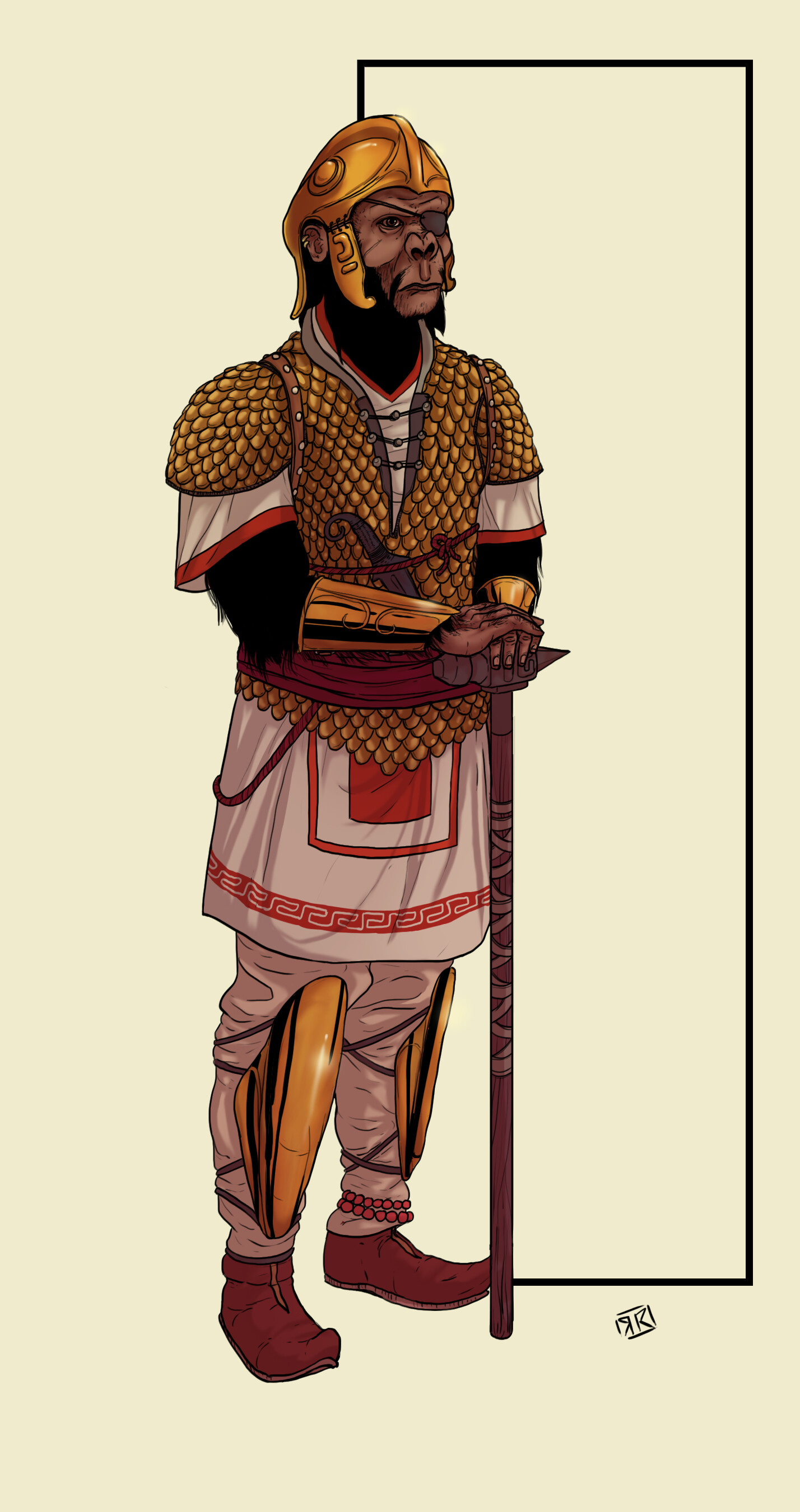
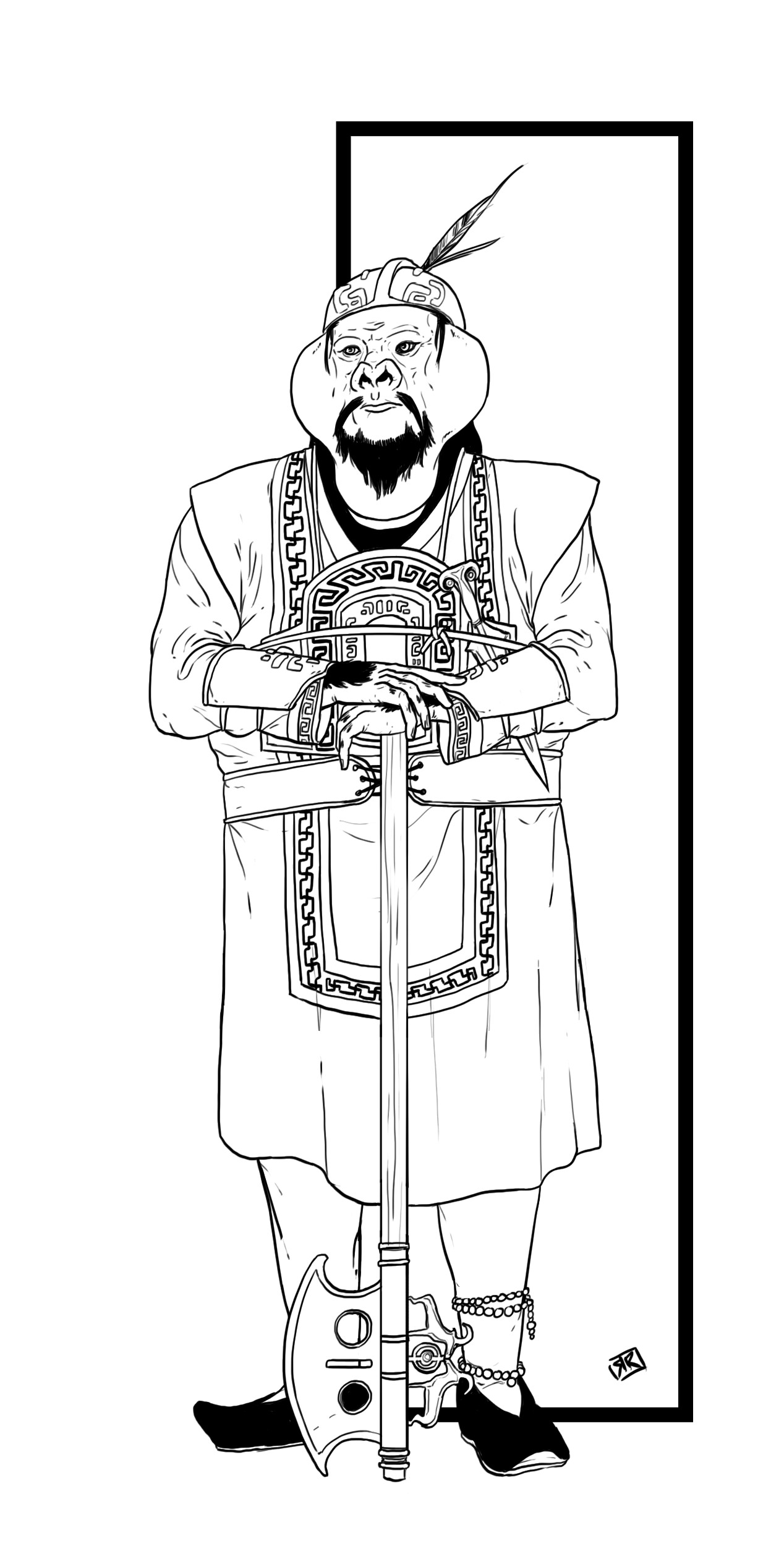
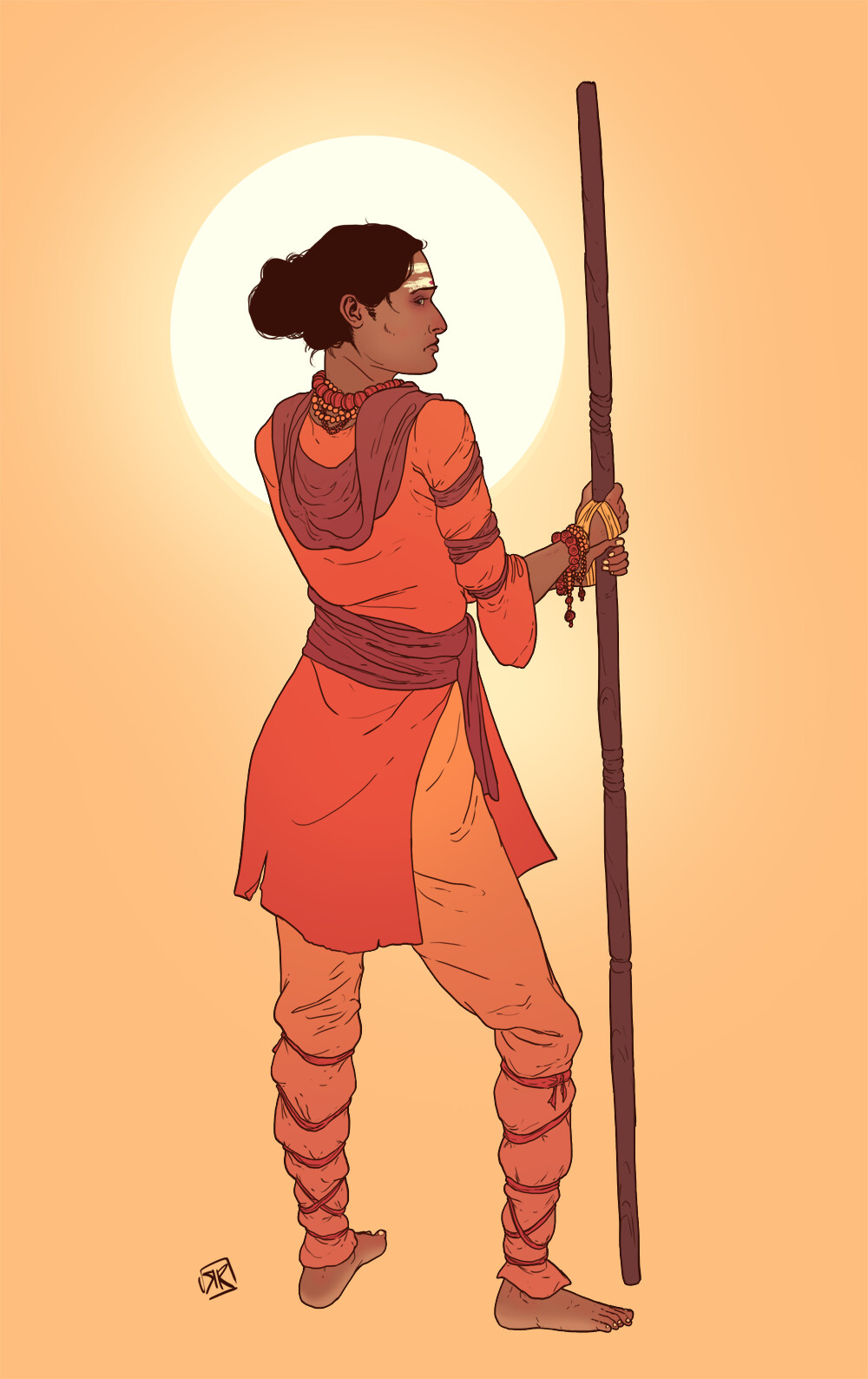
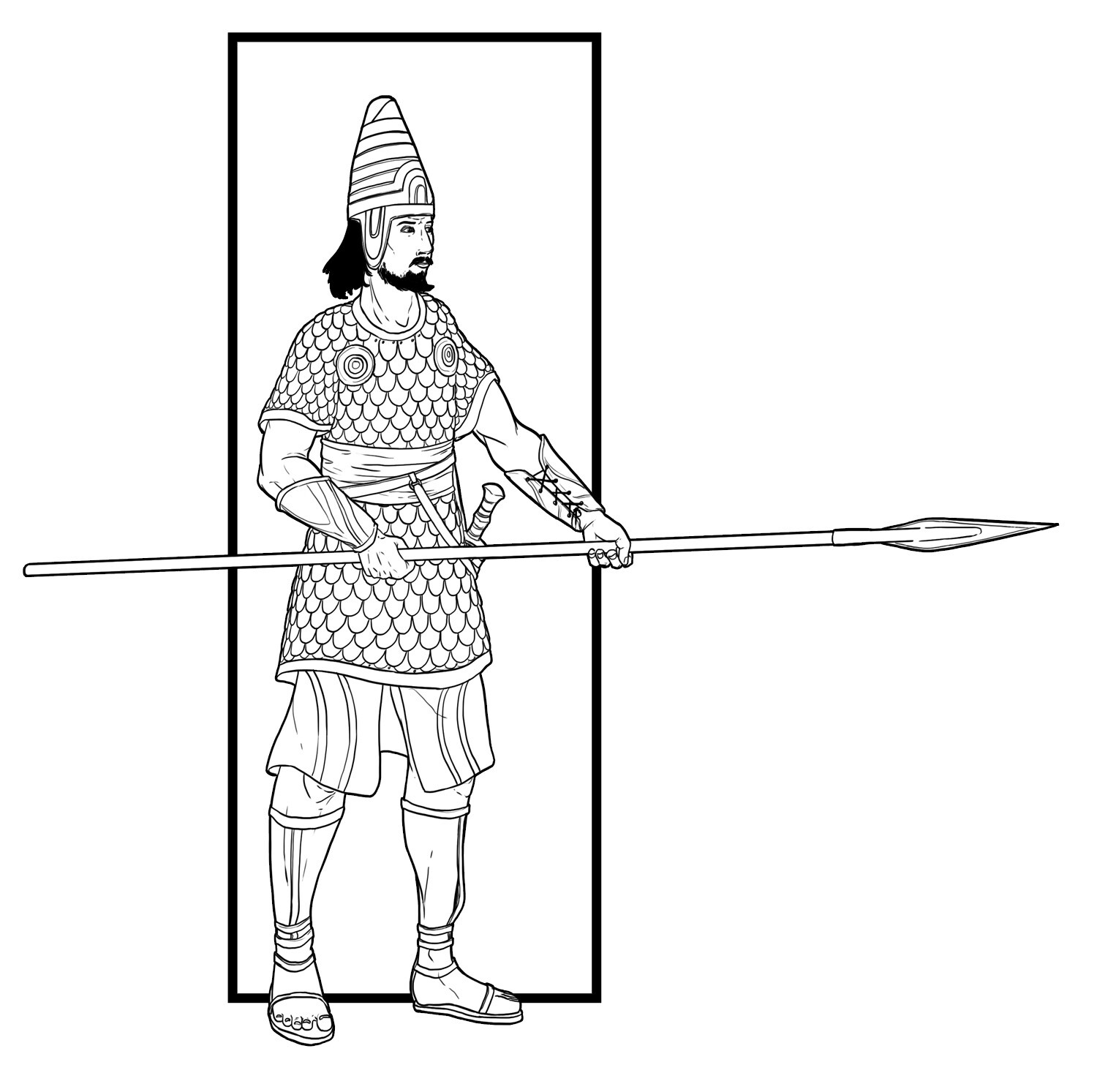
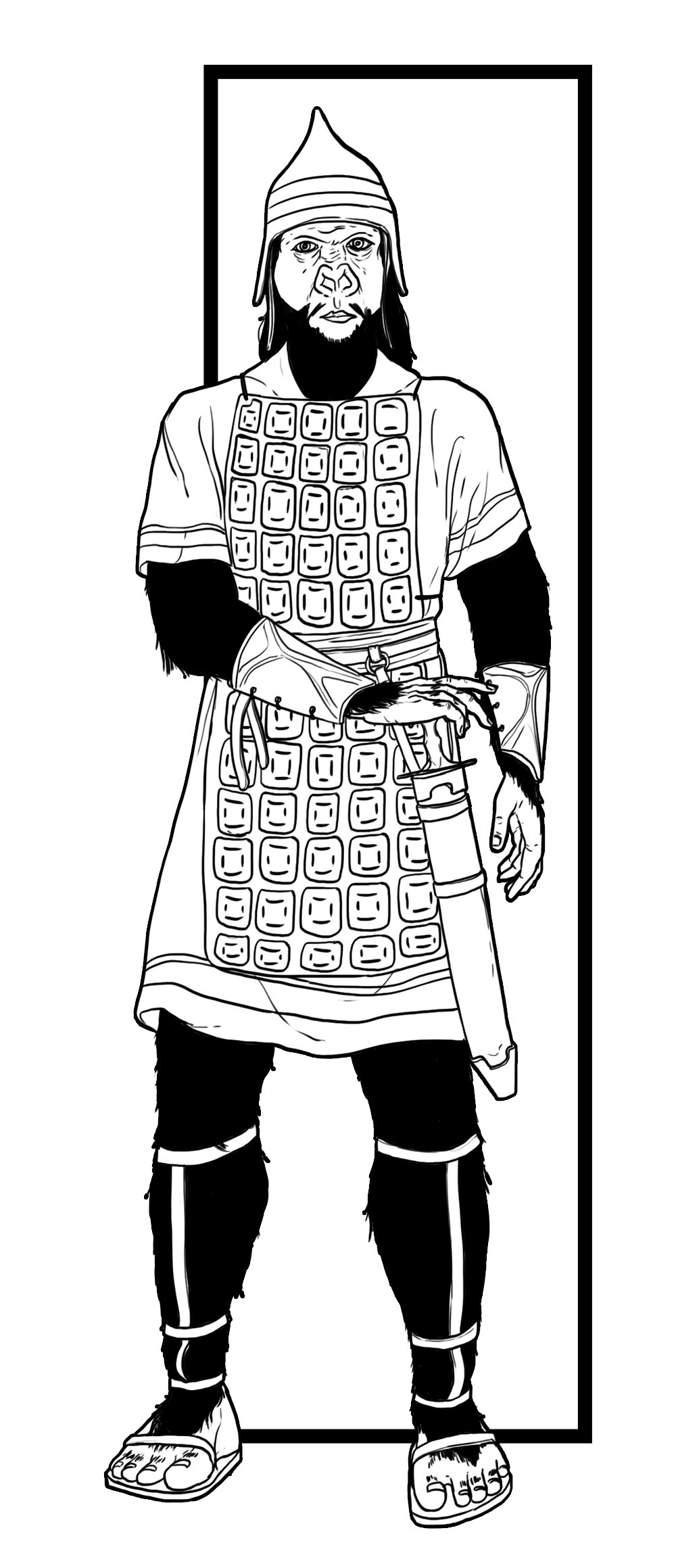
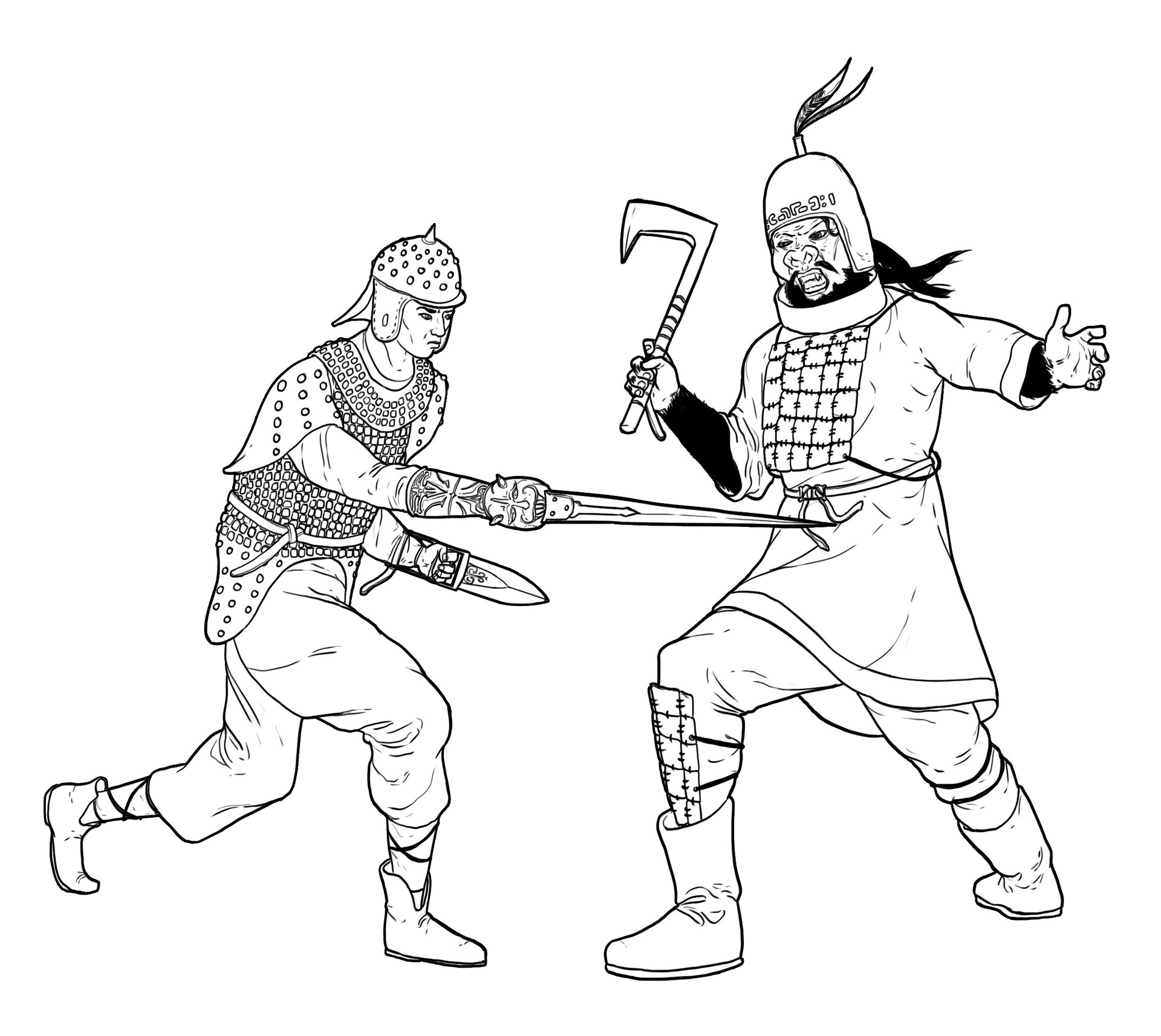
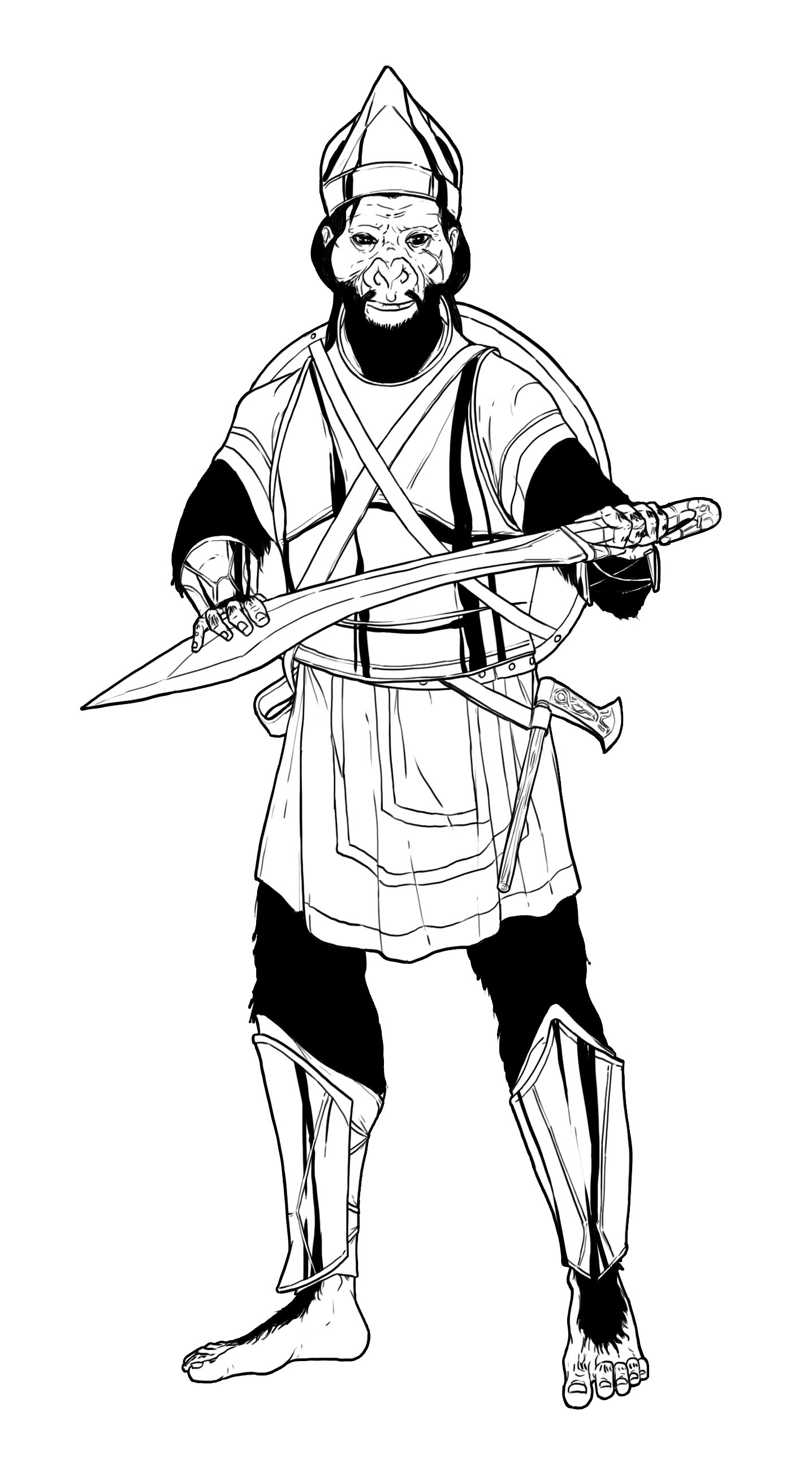
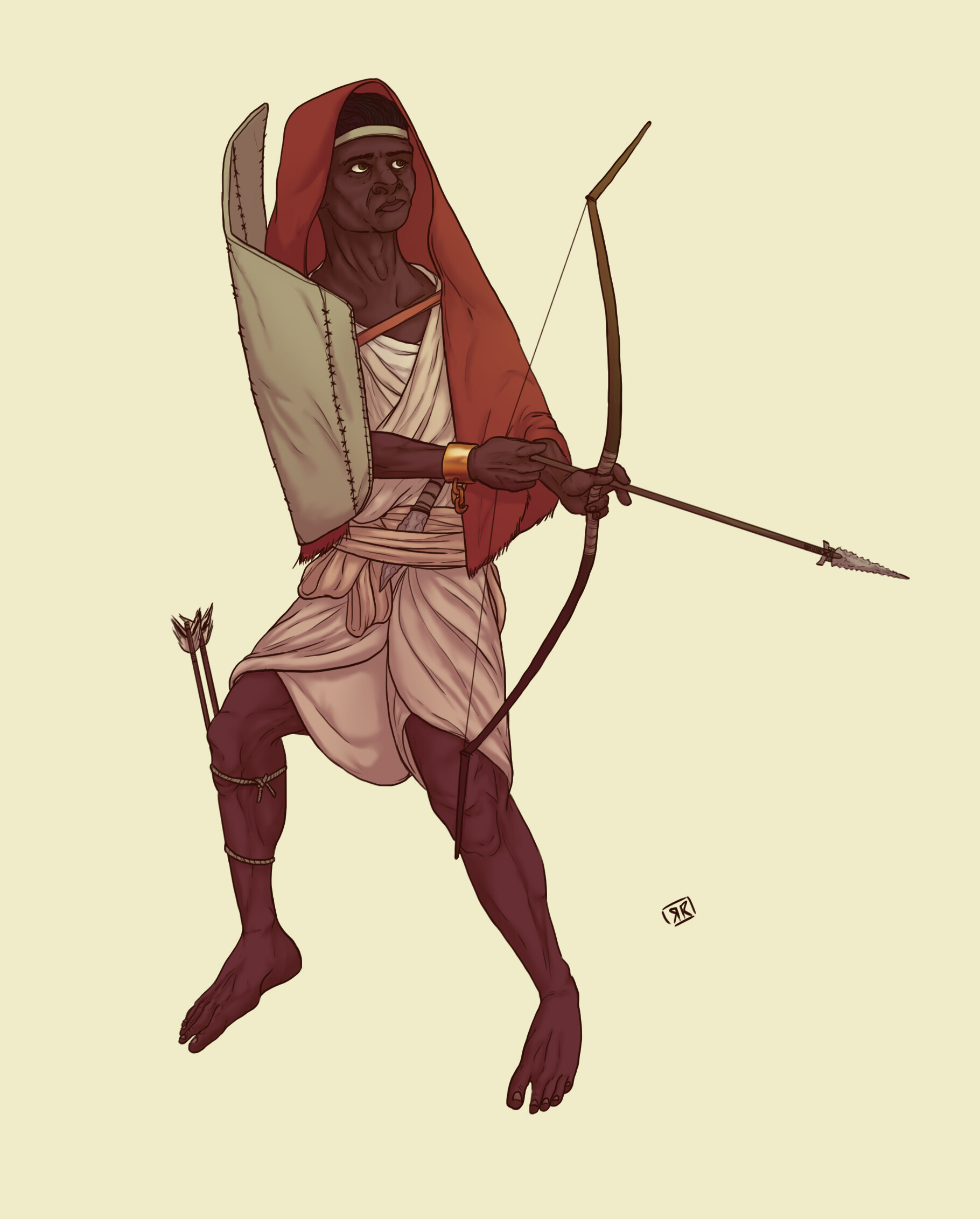

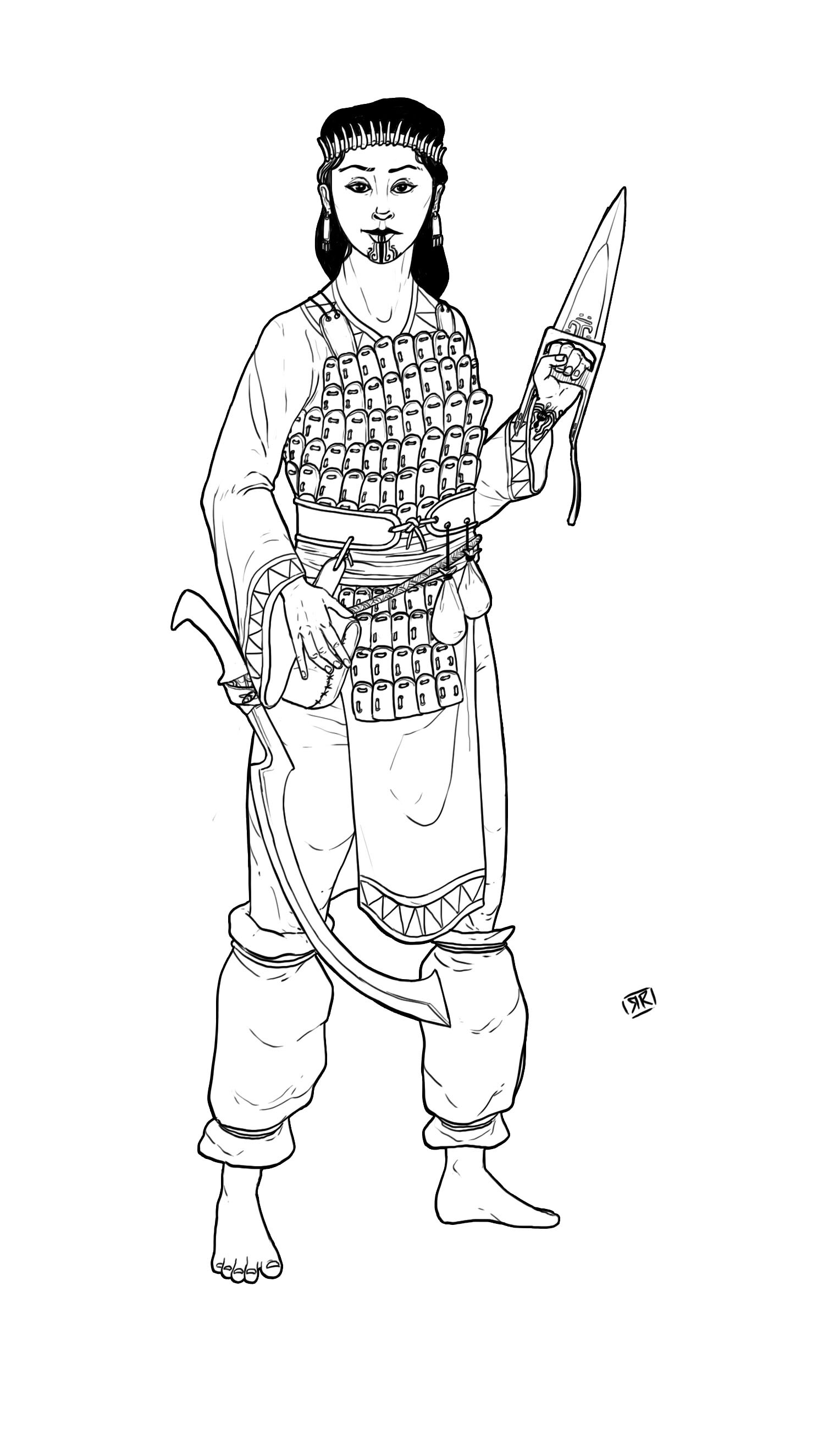
"A personal project - a world where men and apes live in parallel civilizations. Like Planet of the Apes, but in the bronze age."










Hanuman vibe!!!ArtStation - The Old World, Ryan Rhodes
"A personal project - a world where men and apes live in parallel civilizations. Like Planet of the Apes, but in the bronze age."










Stämma
WC-zonmö i behov av IQ-hjälp
Om man söker inspiration till kämpar och härar finns det en artikel om krigsspel i bronsålderns Nordeuropa här på sidan 70: https://www.wargamesillustrated.net/?r3d=wi360-october-2017
(Av nån anledning visas det som en saknad bild, men om man klickar på den kommer tidskriften upp)
(Av nån anledning visas det som en saknad bild, men om man klickar på den kommer tidskriften upp)
ArtStation - Basuki
"Years ago, when me and my then-partner started personifying countries and civilisations, they made personification characters of ancient civilisations. They've long since given them to me to handle as my own characters, and around the tail end of 2020 something reignited my desire to completely revamp said characters and give them a totally updated look, starting with Ancient Athens and Sparta."
Följ titellänkarna för att se mer presentation av karaktärerna om ni är intresserade
ArtStation - Athens
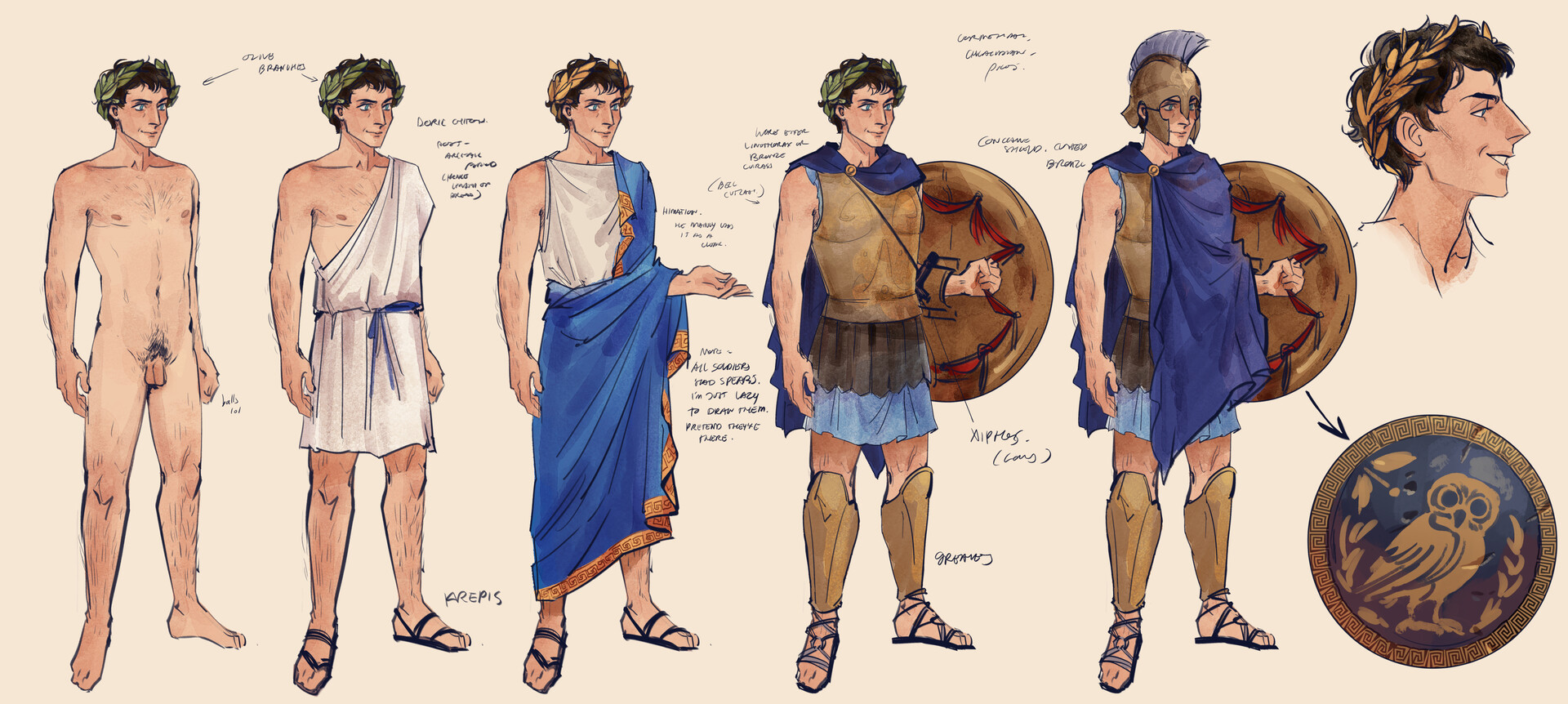
ArtStation - Sparta, Basuki

ArtStation - Corinth, Basuki

ArtStation - Delphi, Basuki

ArtStation - Thebes, Basuki

ArtStation - Ephesus, Basuki


ArtStation - Miletus, Basuki

ArtStation - Thespiae, Basuki
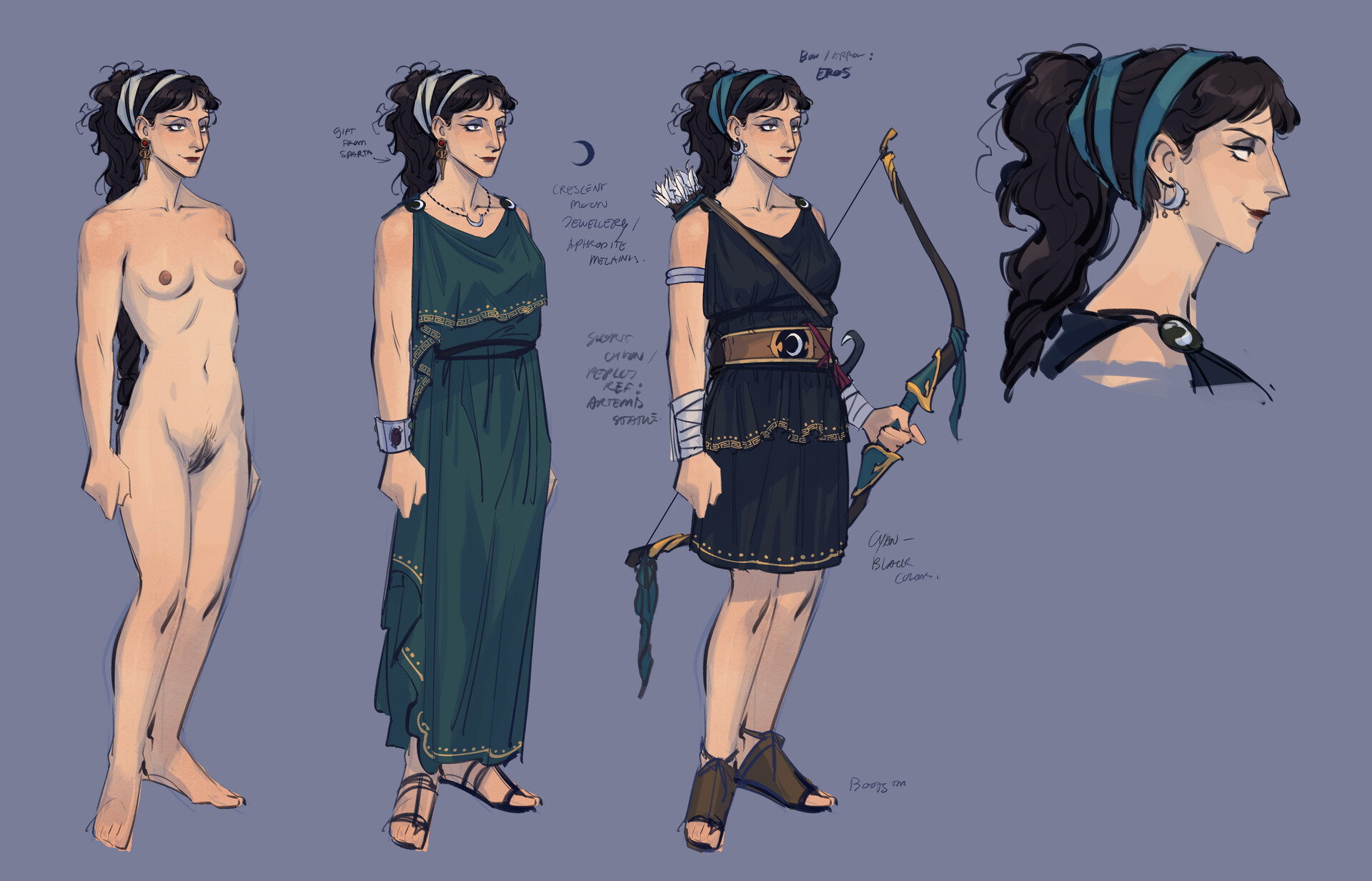
ArtStation - Macedon, Basuki
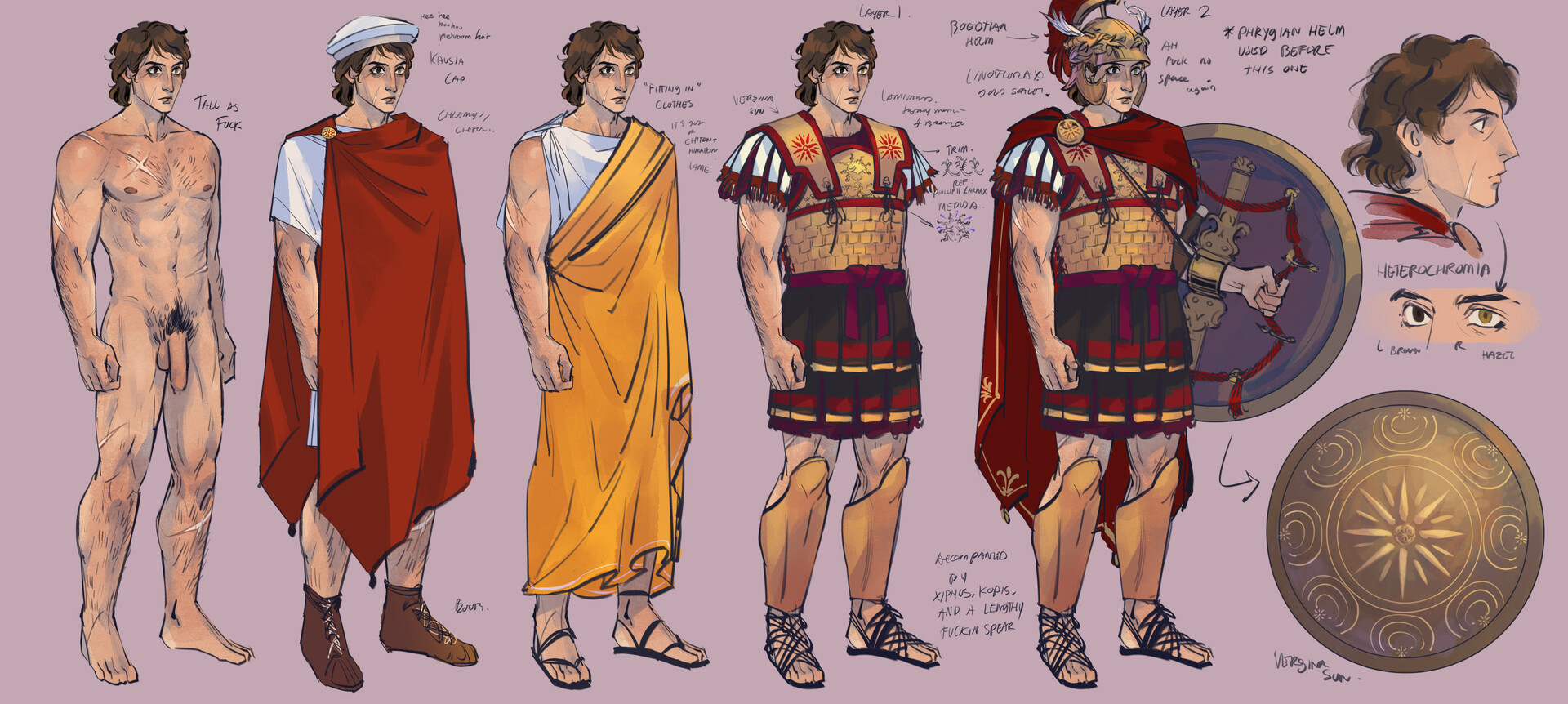
ArtStation - Minoan Civilisation, Basuki

ArtStation - Mycenae, Basuki
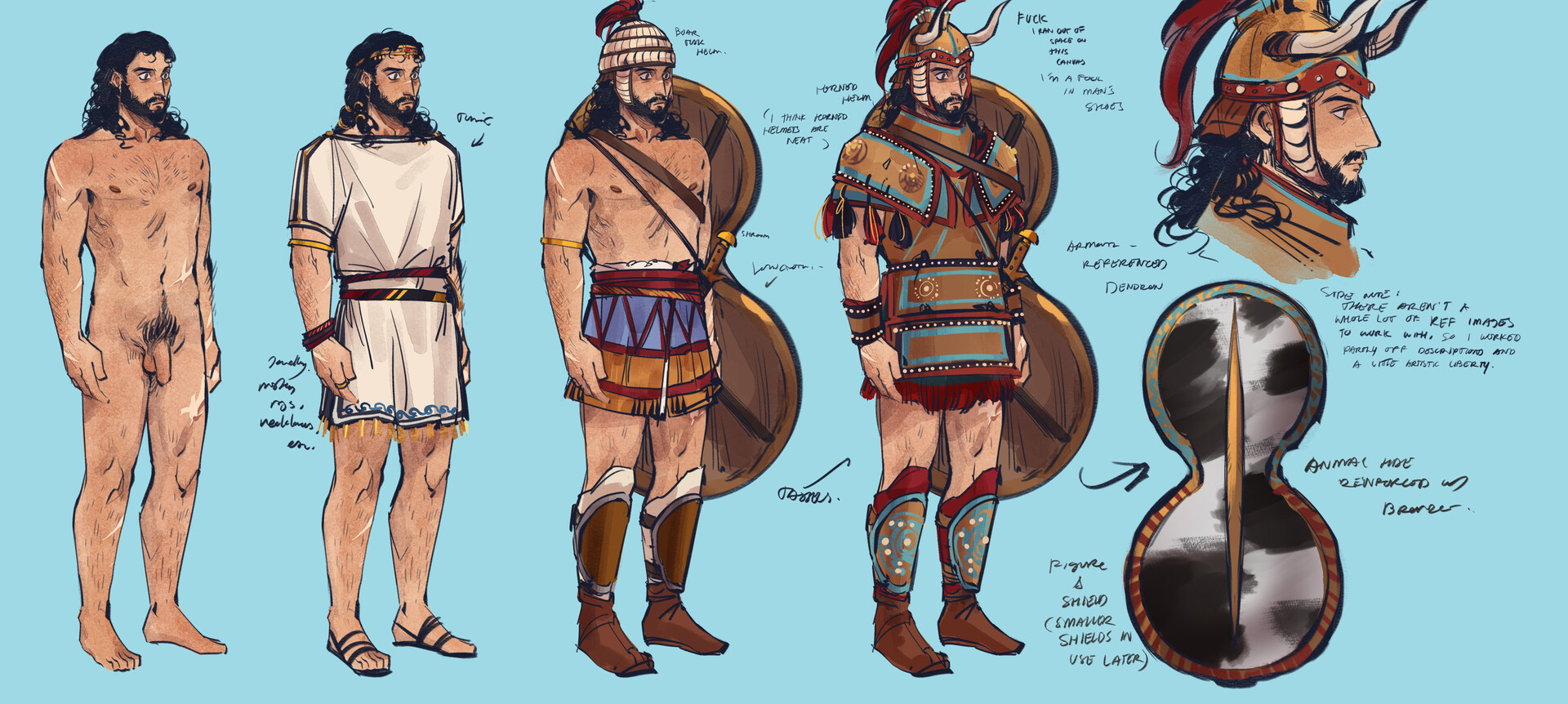
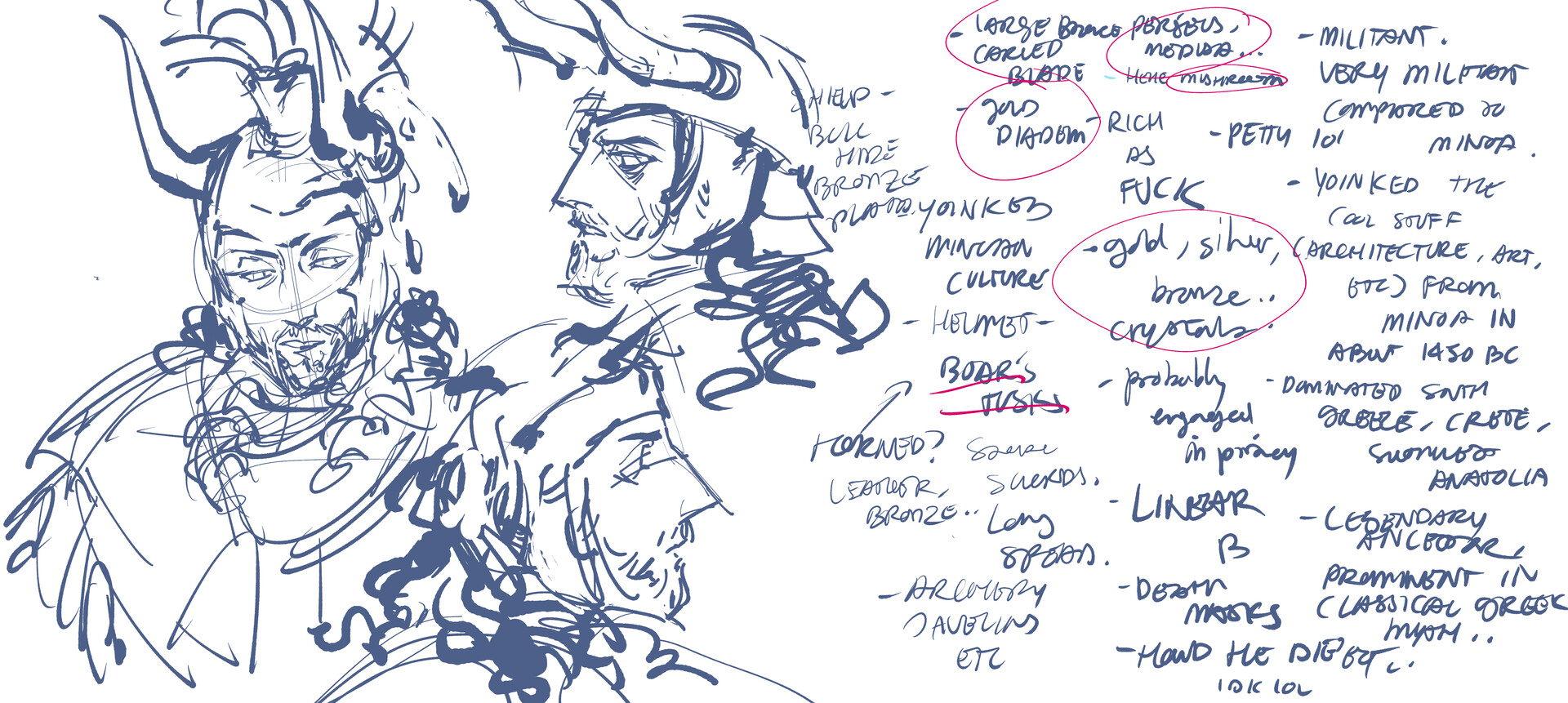
ArtStation - Ancient Egypt, Basuki

ArtStation - Phoenicia, Basuki
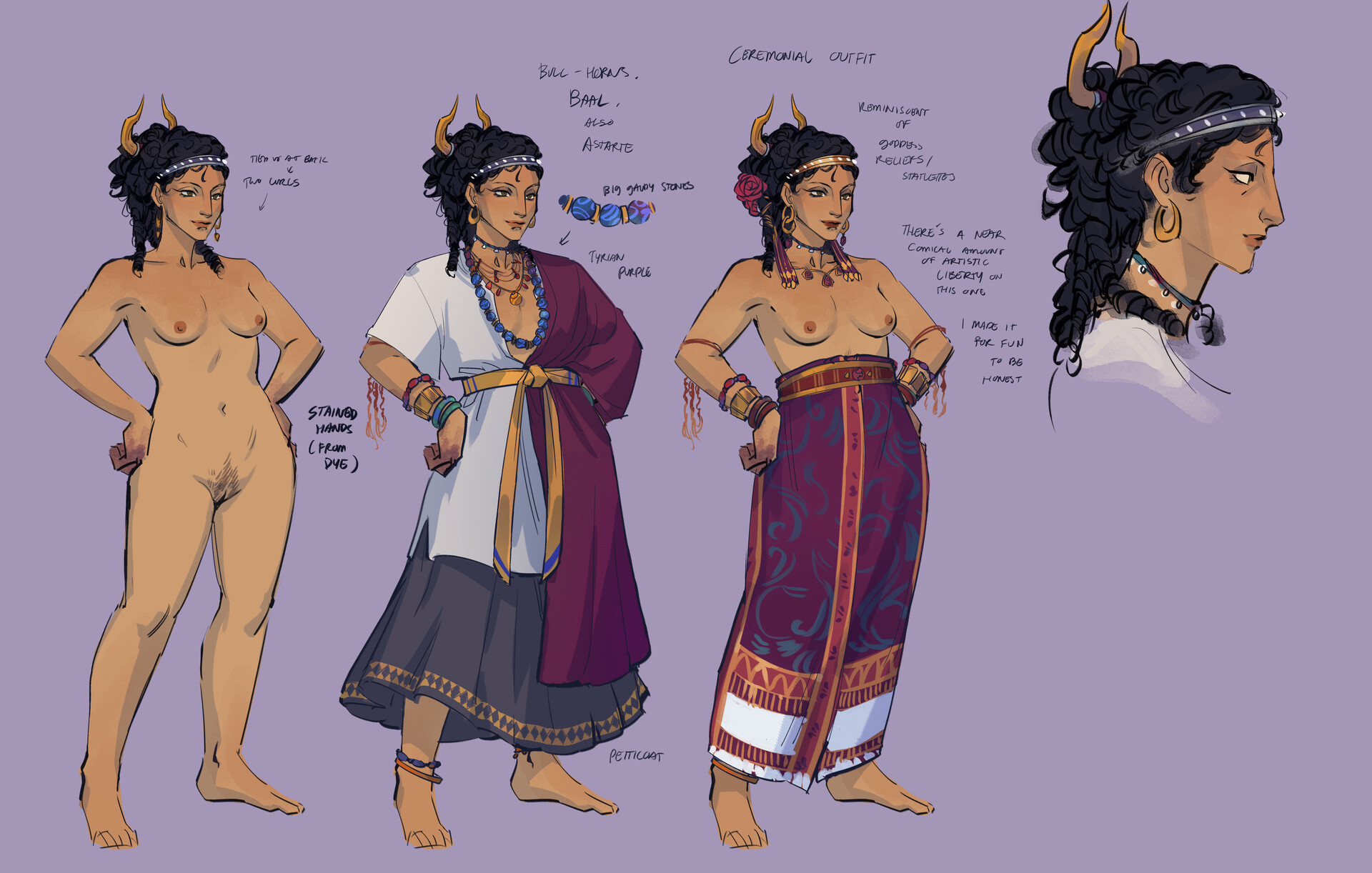

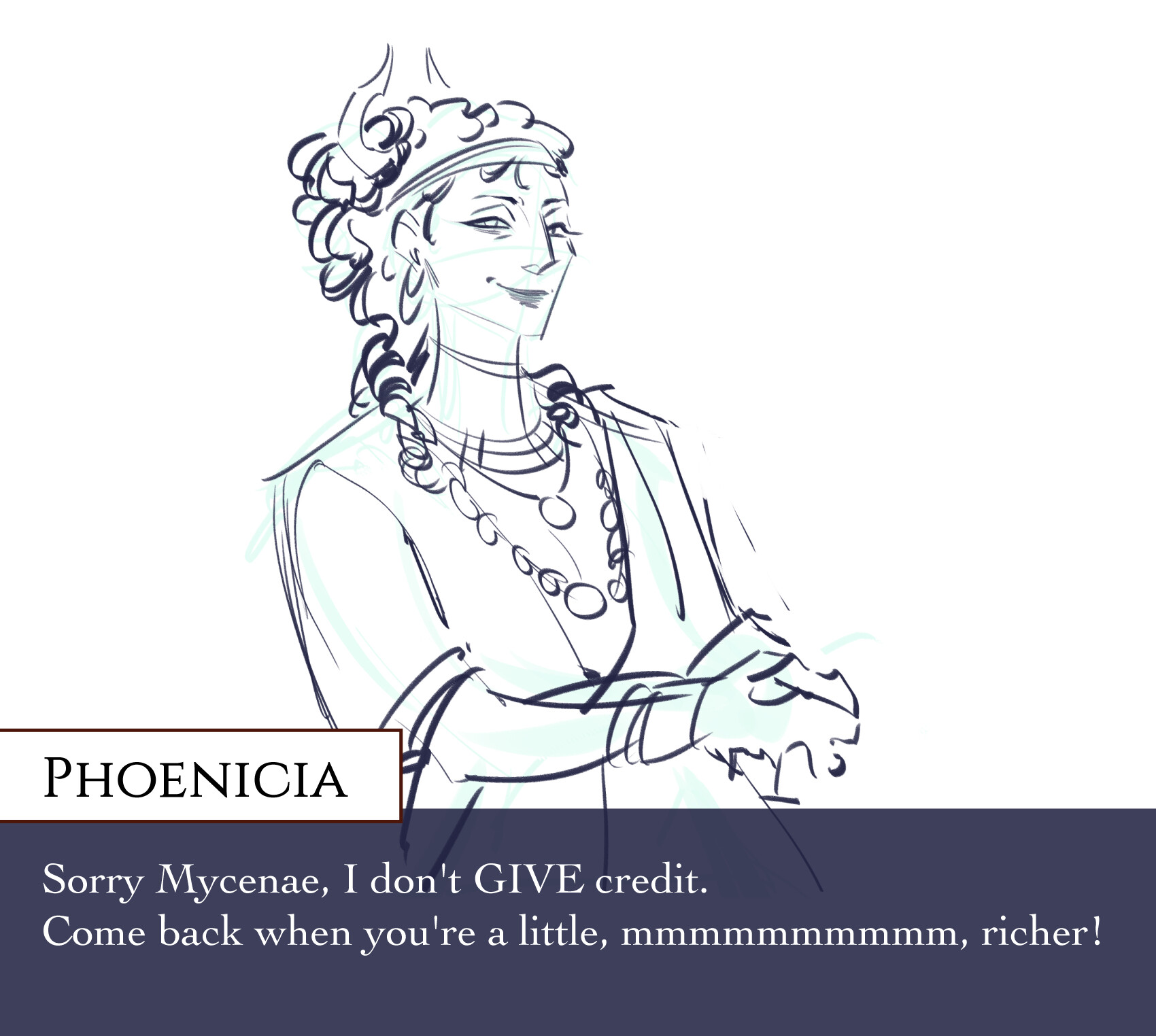
ArtStation - Sea Peoples, Basuki

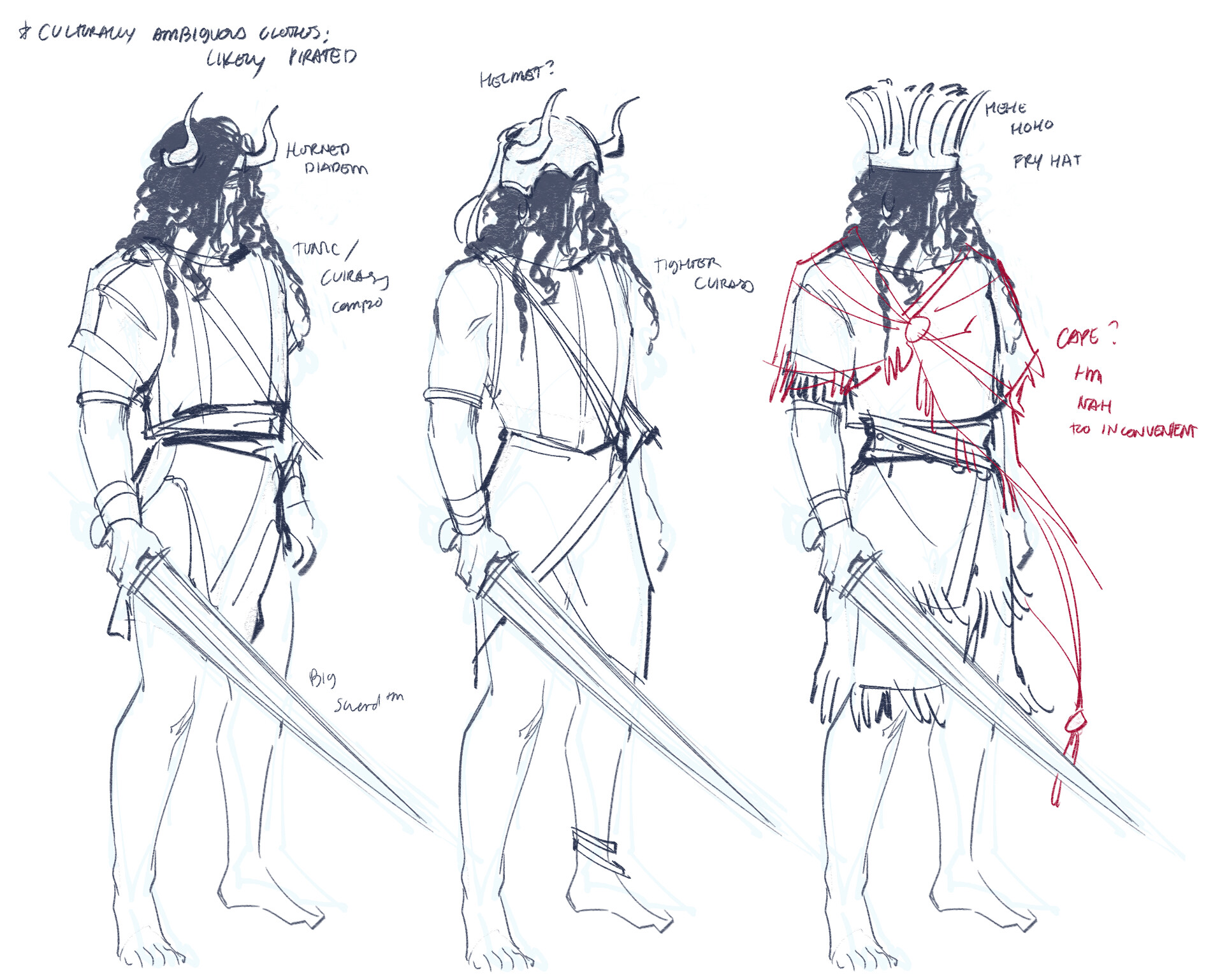
"Years ago, when me and my then-partner started personifying countries and civilisations, they made personification characters of ancient civilisations. They've long since given them to me to handle as my own characters, and around the tail end of 2020 something reignited my desire to completely revamp said characters and give them a totally updated look, starting with Ancient Athens and Sparta."
Följ titellänkarna för att se mer presentation av karaktärerna om ni är intresserade
ArtStation - Athens

ArtStation - Sparta, Basuki

ArtStation - Corinth, Basuki

ArtStation - Delphi, Basuki

ArtStation - Thebes, Basuki

ArtStation - Ephesus, Basuki


ArtStation - Miletus, Basuki

ArtStation - Thespiae, Basuki

ArtStation - Macedon, Basuki

ArtStation - Minoan Civilisation, Basuki

ArtStation - Mycenae, Basuki


ArtStation - Ancient Egypt, Basuki

ArtStation - Phoenicia, Basuki



ArtStation - Sea Peoples, Basuki


Attachments
terje
xenomorf mystiker
Skarpskytten
Ödestyngd världsvandrare
Rekonstruktion av rustning och vapen för en mykensk lawageta (härförare).
View attachment 15677
Det där är ju en vakt från Caverns of Thracia!
Khan
Kondottiär
- Joined
- 23 Apr 2014
- Messages
- 5,321
Kom an bara!Rekonstruktion av rustning och vapen för en mykensk lawageta (härförare).
View attachment 15677
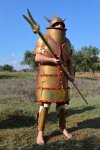
Större version, med länk till skaparens inlägg med det, och beskrivning:Rekonstruktion av rustning och vapen för en mykensk lawageta (härförare).
View attachment 15677
Mycenaean lawageta by JFoliveras on DeviantArt
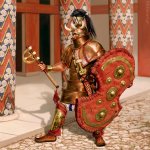
"MYCENAEAN “LAWAGETA” (leader of the king’s army). The Mycenaean civilization was the last phase of the Bronze Age in mainland Greece, lasting from 1750 BC to 1050 BC approximately. Mycenaean art and material culture was heavily influenced by the Minoan civilization of Crete (3100-1100 BC), which the Mycenaeans seem to have eventually conquered, although both civilizations were unique in many aspects. Unlike the relatively peaceful Minoans, the Mycenaeans were very war-like, with many independent centres of power. Most Mycenaean warriors were lightly equipped, often wearing only a tunic (unlike Minoan men, that went bare-chested, wearing only a loincloth or a kilt-like lower garment) and a helmet usually made of boar tusks. But members of the Mycenaean elite wore extremely bulky and heavy bell-shaped armours with massive pauldrons that encircled the whole torso and high neck guards that practically left only the eyes visible. Although later examples of these armours are lighter and smaller, the most famous one was found at Dendra, which is the one used as reference here. Mycenaean helmets could have horns, as represented in the famous Vase of the Warriors, and Homer describes Achilles wearing a helmet with four horns in the Iliad. Surviving examples of horns that may have been attached to a helmet were also found at Dendra. This warrior also carries an “epsilon” axe, a type of axe used all over the Middle East and Egypt, and a “dipylon” shield based on Minoan and Mycenaean artistic representations.
The Bronze Age in the eastern Mediterranean ended in chaos, and Greece was no exception. Most Mycenaean centres of power were eventually destroyed, possibly by the obscure tribes known as the “Sea Peoples”, that brought the Late Bronze Age civilizations of the eastern Mediterranean to an end (all except Egypt). The Iron Age in Greece began with a period known as the “Greek Dark Ages”, at the end of which Homer wrote the Iliad, inspired by a heroic Mycenaean past that would become eternally associated with the mythical Trojan War.
Some parts of this illustration have been inspired by the reconstructions of Mycenaean weapons and armours made by Dimitrios Katsikis: www.hellenicarmors.gr/en/"
Och lite mer bronsåldersbilder av samma snubbe:
Meda of Odessos by JFoliveras on DeviantArt
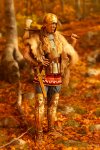
"MEDA OF ODESSOS was a Thracian princess of the Getae, daughter of king Cothelas, and one of the many wives of Philip II of Macedon, so, she was a barbarian stepmother of Alexander the Great. The Getae were a northern Thracian tribe related with the Dacians, who lived around the Danube River in what is now northern Bulgaria and southern Romania. During the reign of Philip II and his son Alexander, the Getae, like the rest of Thrace, became vassals of Macedon. Alexander fought the Getae during his Balkan campaign, at the beginning of his reign.
She wears a scale armour with a skirt of “pteruges” (shorter in the front and longer in the sides to facilitate riding a horse), a scale “gorget” and decorative appliques based on a real armour found at the Golyamata Mogila tumulus, an Odrysian tomb from Bulgaria. The gilded helmet is based on a find from the tomb of the Odrysian king Seuthes III. The greaves are based on several finds from northern Thrace, and in other greaves like these we can see female faces with horizontal lines that have been interpreted as tattoos, which have been used here as reference for the face tattoos of Meda. The tattoos on the arms are based on those worn by Thracian women in Greek vase paintings. Thracian tattoos are also mentioned by the Greek historian Herodotus as a sign of status. Thracian women painted on Greek vases are represented wielding comically large double axes known as labrys. Fancy double axes made of very thin bronze or gold were used as ceremonial objects in Minoan Crete, but in Thrace, there are countless finds of much simpler and thicker double axes made of iron, dating to the Classical and early Hellenistic periods. I also gave her a Thracian “akinakes” dagger, like those used by the nomadic Scythians and the Persians. While the southern Thracians living closer to Greece didn’t wear pants, the northern ones like the Odrysians and the Getae, more influenced by the Scythians, did wear them."
Yue warrior by JFoliveras on DeviantArt
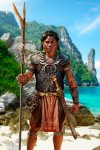
"BAIYUE (THE HUNDRED YUE), CHINA’S SOUTHERN BARBARIANS
Yue or Baiyue is the name by which the Han Chinese knew the tribes living in what is now southern China and the jungles of Southeast Asia. This was an umbrella term including many peoples with common traits as well as differences (something like the nomads of the steppes), and their ethno-linguistic diversity is still a matter of debate, although there is some consensus that at least part of them were Austronesian peoples. The northernmost Yue ended up assimilated into Han Chinese culture and their territory became today’s southern China, but the rest of the Yue evolved into the Vietnamese, the Thai, and the Khmers, among others, eventually adopting Hinduism and Buddhism and becoming Indianized. The Yue are also believed to have a common ancestry with insular Austronesians, and that means being related with Polynesian peoples such as the natives of Hawaii, the Maori of New Zealand or the Rapa Nui of Easter Island. In modern-day southern China, there was a Yue kingdom called Nanyue, ruled by a dynasty of Chinese descent and considerably more sinicised than any other Yue. Chinese influence in Nanyue began as soon as the Qin dynasty, the dynasty of China’s first emperor, so, by the time emperor Wu of Han (Wudi) conquered Nanyue, this was very much a mix of barbarian and Chinese cultures. Emperor Wu, famous for his Siberian campaign against the Xiongnu, the War of the Heavenly Horses against the Dayuan, and for having sent the envoy Zhang Qian to Hellenistic Bactria, also annexed Nanyue to the Han Empire. The tribes further south, the Hundred Yue or Baiyue, would be much more primal than the half Chinese / half barbarian Nanyue. The Chinese described the Yue in their original form as being completely tattooed, having their hair either short or untied (opposite to the Chinese who wore it in a bun), blackening their teeth, worshipping animal totems, practicing cannibalism, wearing clothes and armours made of plant fibres, and living in huts. The Yue were also described as skilled seafarers and sword-makers, knowing both bronze and iron metallurgy."
Nordic Bronze Age girl by JFoliveras on DeviantArt
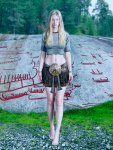
"Sun dancer girl from the NORDIC BRONZE AGE. With this illustration I start a new project in which I’ll reconstruct characters from different Bronze Age civilizations. This one is roughly based on the clothes and artifacts found in the burial of a young girl who died in 1370 BC (some 30 years before the birth of Tutankhamun) and was buried in a bog in Egtved (Denmark). The acidic soil of the bog completely disintegrated her bones, but other organic materials were well-preserved. The coffin was cut from a single tree trunk, and the short blond hair and well-trimmed nails are all what’s left of the girl. The inside of the coffin was covered with an ox pelt, which still has the silhouette of the girl’s disintegrated slim body imprinted in the fur. The clothes consisted of a kind of “crop top” and a short string skirt that would have been slightly see-through when dancing. All the clothes were made of wool. Similar skirts are worn by bronze figurines of what seem to be female ritual dancers, who probably took part in a Sun cult. The Egtved girl was also buried with a bronze disk that was attached to the waist with a woollen belt, for which there are many similar finds throughout Scandinavia. I also added a necklace of amber beads and a hair comb, also based on burial finds. In the background, you can see petroglyphs representing boats. Such rock carvings can be found all over southern Sweden, Norway, and Denmark.
THE NORDIC BRONCE AGE lasted from 2000 BC to 500 BC. For comparison, it started when the last mammoths went extinct in Siberia and ended around the time of the Persian invasion of Greece. During the Bronze Age, Scandinavians exported Baltic amber to the rest of Europe, as far as Minoan Crete, Mycenaean Greece, pharaonic Egypt, and Mesopotamia. In return, Scandinavians imported blue glass beads from the eastern Mediterranean. The Nordic Bronze Age was followed by the Pre-Roman Iron Age, known in archaeology as the Jastorf culture, period during which northern Europeans started to be known collectively as the Germanic tribes by Classical authors."
Saka warriors by JFoliveras on DeviantArt

"SAKA warriors (Scythians from Central Asia and southern Siberia), 4th century BC. The world of the early steppe nomads is a very obscure one, and the names by which we know them make it even more confusing. I’ll try to make it as understandable as I can. First, let me explain the difference between historical names (known from ancient sources) and archaeological names (used by modern archaeologists based on common material culture). In ancient sources, the words “Saka” and “Scythian” refer to the same peoples: the Iranic-speaking nomads that roamed the steppes between southern Ukraine and the Pamir mountains of Tajikistan. The only difference between these names is that “Scythian” is how the Greeks called these nomads, and “Saka” is how the Persians called them. Although nowadays we tend to use “Scythian” for the nomads of eastern Europe and “Saka” for the Siberian and Central Asian ones, historically, the Persians would call the European Scythians “Saka beyond the (Black) Sea” and when Alexander the Great fought the Saka in Central Asia, to the Greeks these nomads were Scythians as well. Despite the Greek and Persian names being applied to both eastern and western Iranic nomads, the material cultures of the European Scythians and the Central Asian Saka had differences. In the field of archaeology, the Scythians and Saka mentioned in Greek and Persian historical sources are considered part of the “Scythian horizon”, which is an umbrella term for all the material cultures of the steppes that have some specific common characteristics (like the same types of weapons, a common “animal style” art, similar horse gear, similar clothing…). The “Scythian horizon” extends from eastern Europe (including parts of Thrace in the Balkans) to the Ordos desert in the Chinese region of Inner Mongolia, and from the forest-steppe of Siberia to, at some point in history, north-west India. In such a vast territory one could expect to find quite a lot of ethno-linguistic diversity, with not only Iranic speakers but also Finnic, Ugrian, Turkic, Mongolic and Yeniseian peoples, to name a few. The problem is that none of these Scythian-like peoples left any written sources."
Last edited:
Historien om Sverige – 2. Metallernas tid, ca 1700 f Kr–500 e Kr | SVT Play
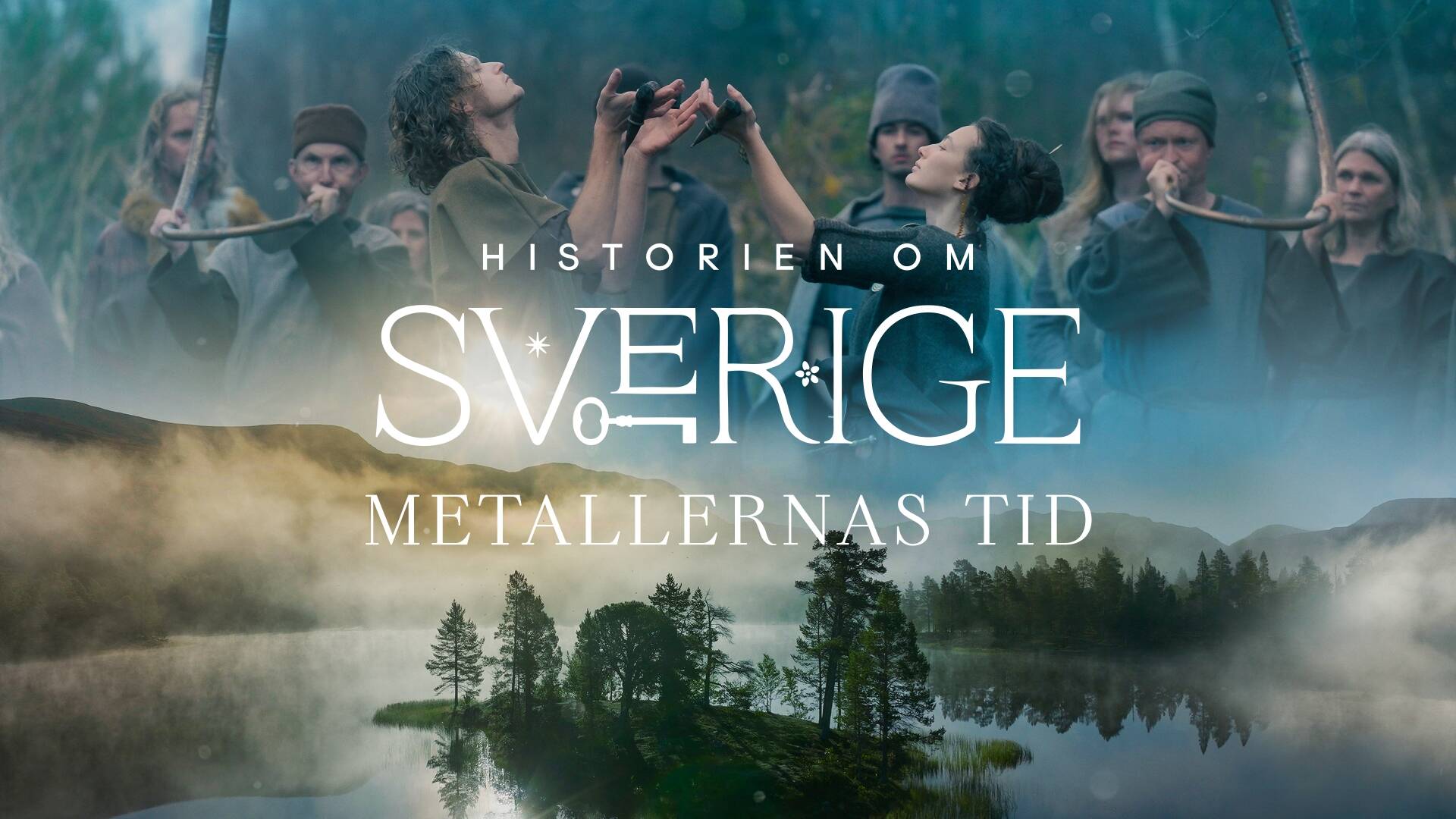
"På jakt efter metaller lämnar människorna stenåldern bakom sig och ger sig ut i Europa på långa och riskfyllda resor. Föremålen och kunskaperna de tar med sig hem skapar nya möjligheter för alla som lever i vårt land. Men de leder också till våld och krig. Simon J Berger är seriens berättare. Del 2 av 10."
Bronsålderns kollaps | SVT Play
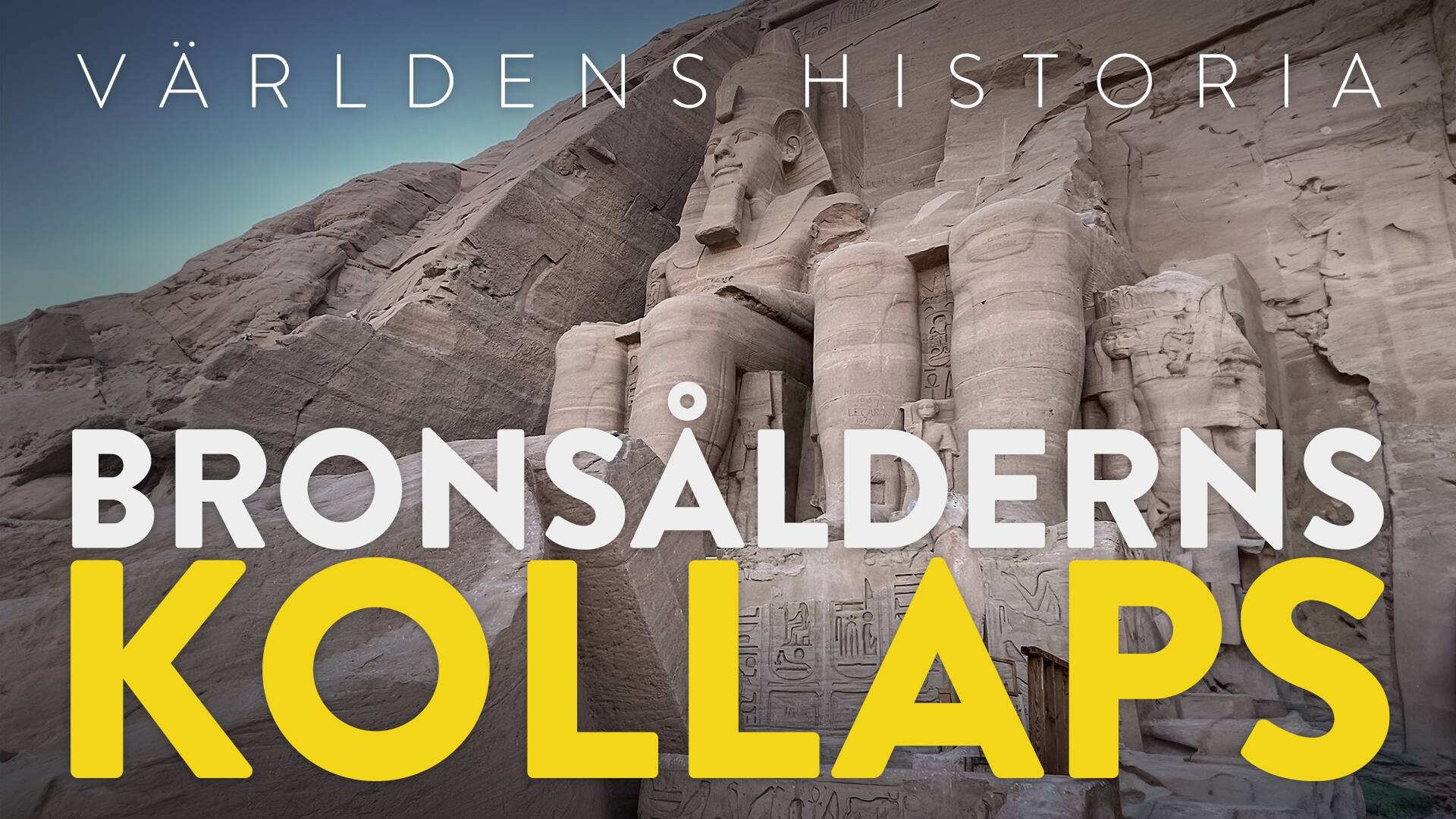
"Under bronsåldern domineras vår värld av tre blomstrande civilisationer. Men inom loppet av bara 50 år kollapsar de alla, en efter en. Hur är det möjligt? Följ med och nysta i den stora gåtan om bronsålderns kollaps."
Den första pyramiden | SVT Play
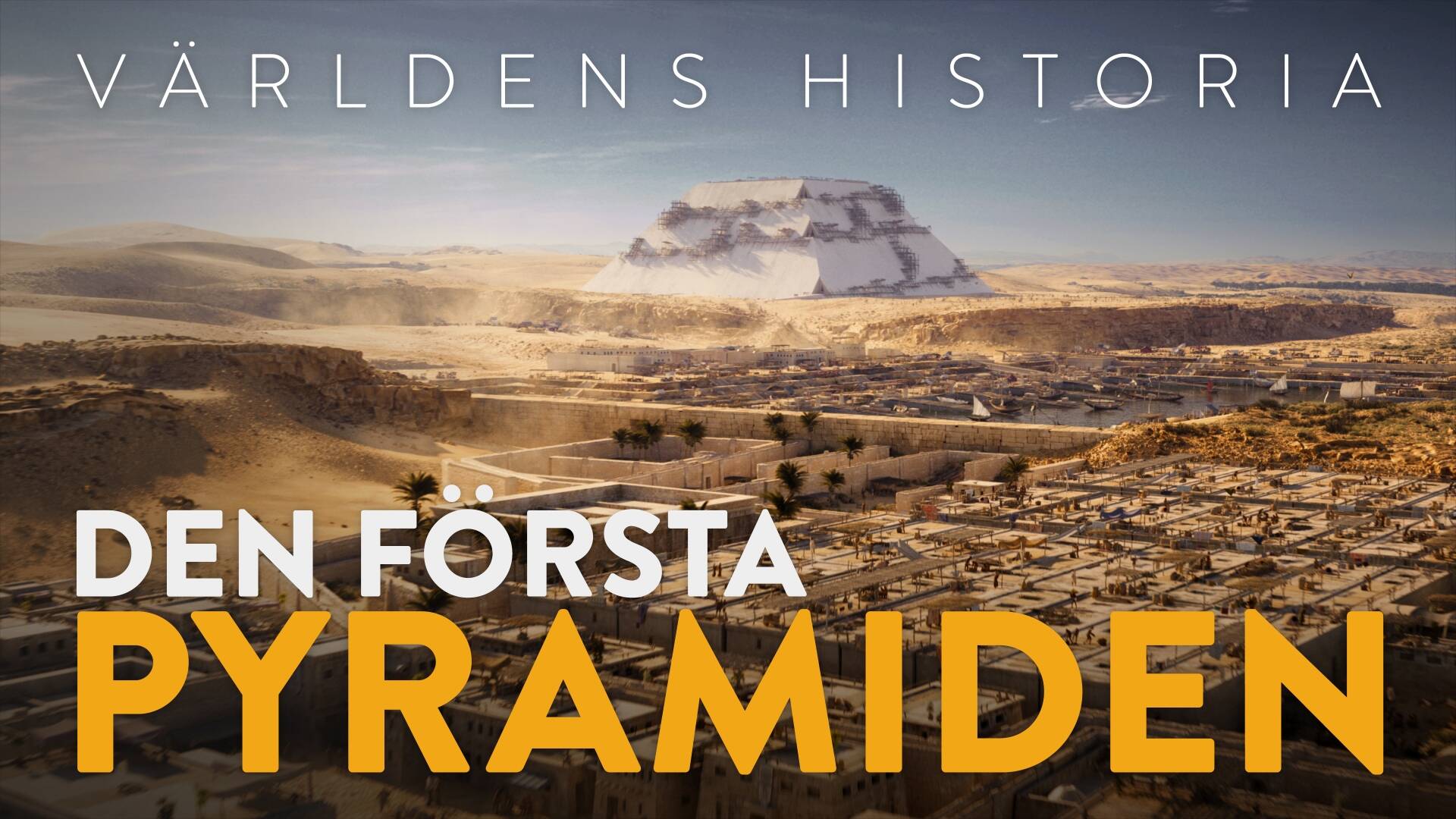
"Vad som fick faraonerna att börja bygga pyramider är en lika fascinerande historia som hur de lyckades skapa dessa gigantiska stenbyggnader i öknen. För över 4600 år sedan är farao Djoser övertygad om att allt elände som skett i hans rike har en alldeles ny lösning och en man får en ny sorts utmaning som kräver enorma ansträngningar."

"På jakt efter metaller lämnar människorna stenåldern bakom sig och ger sig ut i Europa på långa och riskfyllda resor. Föremålen och kunskaperna de tar med sig hem skapar nya möjligheter för alla som lever i vårt land. Men de leder också till våld och krig. Simon J Berger är seriens berättare. Del 2 av 10."
Bronsålderns kollaps | SVT Play

"Under bronsåldern domineras vår värld av tre blomstrande civilisationer. Men inom loppet av bara 50 år kollapsar de alla, en efter en. Hur är det möjligt? Följ med och nysta i den stora gåtan om bronsålderns kollaps."
Den första pyramiden | SVT Play

"Vad som fick faraonerna att börja bygga pyramider är en lika fascinerande historia som hur de lyckades skapa dessa gigantiska stenbyggnader i öknen. För över 4600 år sedan är farao Djoser övertygad om att allt elände som skett i hans rike har en alldeles ny lösning och en man får en ny sorts utmaning som kräver enorma ansträngningar."
Last edited:
Romarriket är väl järnålder?Backa en kickstarter innan jul som heter Cohors Cthulhu som verkar vara typ Lovecraftianskt monsterdödande under Romarrikets tid.
Cybot
Mest spelbar
Nordic Bronze Age girl by JFoliveras on DeviantArt
View attachment 15685
"Sun dancer girl from the NORDIC BRONZE AGE. With this illustration I start a new project in which I’ll reconstruct characters from different Bronze Age civilizations. This one is roughly based on the clothes and artifacts found in the burial of a young girl who died in 1370 BC (some 30 years before the birth of Tutankhamun) and was buried in a bog in Egtved (Denmark). The acidic soil of the bog completely disintegrated her bones, but other organic materials were well-preserved. The coffin was cut from a single tree trunk, and the short blond hair and well-trimmed nails are all what’s left of the girl. The inside of the coffin was covered with an ox pelt, which still has the silhouette of the girl’s disintegrated slim body imprinted in the fur. The clothes consisted of a kind of “crop top” and a short string skirt that would have been slightly see-through when dancing. All the clothes were made of wool. Similar skirts are worn by bronze figurines of what seem to be female ritual dancers, who probably took part in a Sun cult. The Egtved girl was also buried with a bronze disk that was attached to the waist with a woollen belt, for which there are many similar finds throughout Scandinavia. I also added a necklace of amber beads and a hair comb, also based on burial finds. In the background, you can see petroglyphs representing boats. Such rock carvings can be found all over southern Sweden, Norway, and Denmark.
THE NORDIC BRONCE AGE lasted from 2000 BC to 500 BC. For comparison, it started when the last mammoths went extinct in Siberia and ended around the time of the Persian invasion of Greece. During the Bronze Age, Scandinavians exported Baltic amber to the rest of Europe, as far as Minoan Crete, Mycenaean Greece, pharaonic Egypt, and Mesopotamia. In return, Scandinavians imported blue glass beads from the eastern Mediterranean. The Nordic Bronze Age was followed by the Pre-Roman Iron Age, known in archaeology as the Jastorf culture, period during which northern Europeans started to be known collectively as the Germanic tribes by Classical authors."
Det är intressant hur olika folk tolkar Egtvedflickans kläder. Det är egentligen en superenkel design. Magtröja och tvinnad kjol av ull. Bältesplatta av brons. Men tolkningarna av hur de här klädesplaggen har bärts är ganska olika, hur långt tröjan har sträckt sig och om kjolen har suttit på höfterna (och hur högt?) eller den sanna midjan osv. Även om just den här tolkningen är lite väl modern och andra är kanske lite väl 1960-tals konservativa.
Sveriges musikhistoria – 2. Mystiska bronslurar och krigsmusik | SVT PlayHistorien om Sverige – 2. Metallernas tid, ca 1700 f Kr–500 e Kr | SVT Play

"På jakt efter metaller lämnar människorna stenåldern bakom sig och ger sig ut i Europa på långa och riskfyllda resor. Föremålen och kunskaperna de tar med sig hem skapar nya möjligheter för alla som lever i vårt land. Men de leder också till våld och krig. Simon J Berger är seriens berättare. Del 2 av 10."

"Musikjournalisten Ditte Hammar gräver i den svenska musikens historia. I serien får vi höra om bronslurar, harpospelande vikingahövdingar, snapsvisor, förbjudna trummor och musikaliska spioner. Del 2 av 10: Mystiska bronslurar och krigsmusik - metallerna och maktens ljud."
Sveriges konsthistoria – 2. Loshultsmannen - bronsåldern | SVT Play

"I norra Skåne, i Loshults socken gjordes för ungefär hundra år sedan ett unikt fynd, när man upptäckte två små skulpturer i brons, från bronsåldern (ca 1700 f.Kr-500 f.Kr). Sveriges konsthistoria är en del av den väldiga berättelsen om vårt land. Vi ska med några utvalda nedslag visa konst som skildrar förändringar och skapandekraft. Del 2 av 10."
Sveriges litteraturhistoria – 2. Skriften kommer | SVT Play
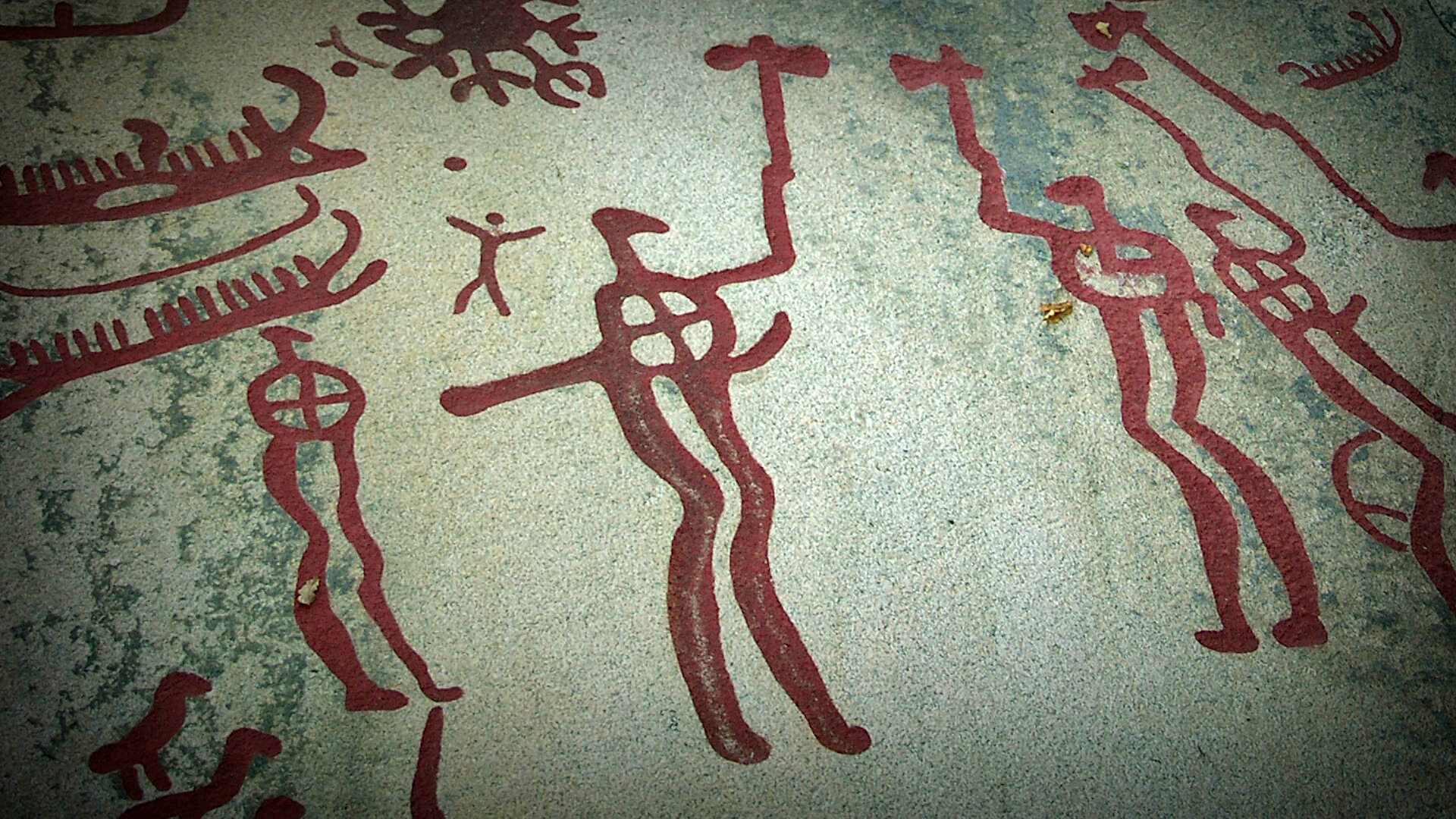
"Vi lämnar stenåldern och kliver in i en tid då handeln med järn och brons tar fart. Norden öppnar sig för kulturer längre bort. Och med det får vi här uppe i norr korn på något helt avgörande för litteraturens utveckling. Berättare är Jessika Gedin. Del 2 av 10."
I den andra halvan av den här episoden

 sverigesradio.se
"uppmärksammar vi forskningen om bronsålderns båtar. På hällristningar syns de över allt, båtristningarna från bronsåldern, men fysiska rester av själva båtarna från en skandinavisk bronsålder är mycket få. Mikael Fauvelle och Johan Ling leder var sina forskningsprojekt som syftar till att få reda på mer om båtarna som skapade förutsättningen för en historisk epok."
sverigesradio.se
"uppmärksammar vi forskningen om bronsålderns båtar. På hällristningar syns de över allt, båtristningarna från bronsåldern, men fysiska rester av själva båtarna från en skandinavisk bronsålder är mycket få. Mikael Fauvelle och Johan Ling leder var sina forskningsprojekt som syftar till att få reda på mer om båtarna som skapade förutsättningen för en historisk epok."

Barnamörderskan på slottet - Vetenskapsradion Historia
Anna Stina föder ett barn på Ekolsunds slott 1772 men kommer att anklagas för att ha dödat barnet strax efter födseln. Hör hennes historia som inleder ...

Doggerland - Nordsjöns Atlantis - Vetenskapsradion Historia
Det sjönk i havet för 7000 år sen, men återuppstår nu i skönlitterär form. Catharina Ingelman-Sundberg berättar om Nordsjöns sjunkna paradis Doggerland. ...
Doggerland var under tusentals år hem åt europeiska stenåldersjägare som fiskade och jagade i de rika sjöarna, åarna och skogarna. Men Doggerland sjönk under de stigande havsnivåerna efter istidens slut och idag pågår jakten efter spåren efter detta försvunna Atlantis. Författaren och marinarkeologen skildrar livet på Doggerland i aktuella Landet som försvann."



